June 8, 2018
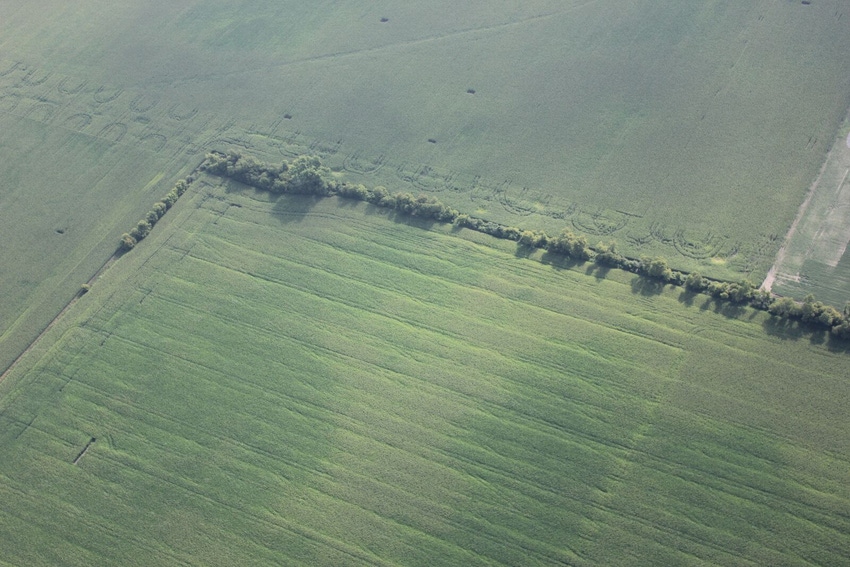
Think Different
Wet soil in spring and fall are prime for compaction; however, heavy axle loads in any conditions can be a concern. Reducing the potential for compaction-related yield loss can be done.
Improve soil structure with reduced tillage and cover crops.
Utilize larger tires and lower air pressure.
Practice controlled traffic whenever possible.
-------------
Eric Jahn knows he has a compaction problem, but with fall rains and increasing equipment size, he feels stymied by few solutions. With his Clarkfield, Minn., soils running the gamut from sugar sand to clay loam to fine black, the problem varies from field to field and year to year.
"No matter what we do, I know we are putting too much weight on the soils," says Jahn. "We've had killer falls where we've combined in mud and even water. We can see the results the following spring and summer."
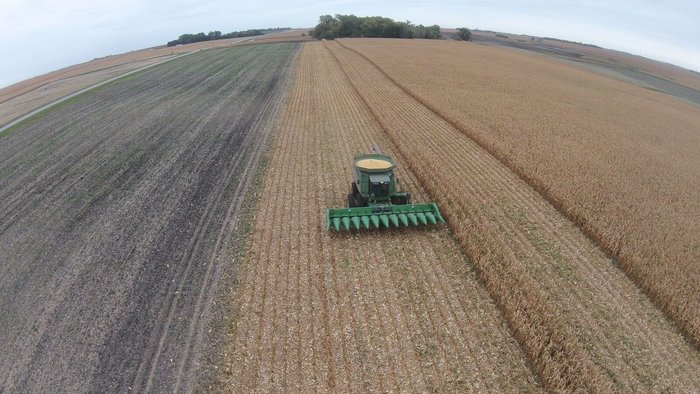
University of Minnesota Extension educator Jodi DeJong-Hughes points out the impact of large equipment on wheel path compaction varies across the field as combine hoppers and grain carts fill.
University of Minnesota Extension educator Jodi DeJong-Hughes is an advocate of reduced tillage and cover crops, but admits that even with them, compaction is a difficult problem to resolve. Rippers and chisel plows utilized by conventional growers like Jahn can have a definite impact on shallow compaction occurring in the topsoil and upper subsoil. However, today's big equipment with its heavy axle loads is pushing compaction deeper, where it can be a ticking time bomb waiting for the right conditions.
Lasting deep compaction
Yield impact research DeJong-Hughes cites goes back to the 1980s and earlier at a wide variety of institutions. It is axle-load related compaction that can come back to haunt producers for years to come. This compaction can move two to three feet into the soil, depending on soil moisture. The more weight and moisture, the deeper and denser the compaction and the longer lasting the potential impact.
"Research carried out at the University of Minnesota Southern Research and Outreach Center with a 20-ton axle load in corn-on-corn plots in 1982 produced a 30% yield loss the next year," says DeJong-Hughes. "Within five years they were back up to average. However, with drought conditions in 1988 and above average rainfall in 1990 and 1993 (167% and 175% of long-term averages, respectively), yields were reduced."
DeJong-Hughes points out that the only thing that has changed is the size of field equipment and where its impact occurs. If a one-time, 20-ton axle load can impact yields for 11 years, imagine what a full 2,000-bushel grain cart with a 70-ton axle load is doing.
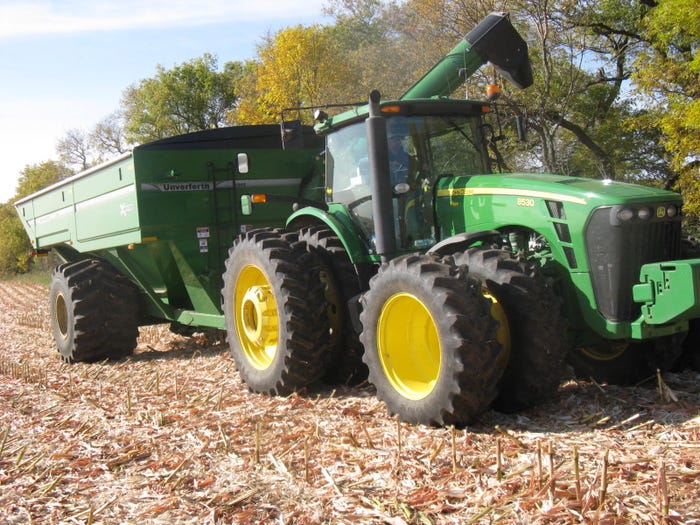
The natural question is if compaction is so bad, why aren't resulting yield losses equally bad, enough to warrant use of smaller equipment? In part, that's because it is difficult to identify the resulting yield loss at the field level.
Varible compaction
"You can have a yield hit and never even know it," says DeJong-Hughes. "Compaction is not consistent across a field. It can increase from one end of a row to the other as a combine fills or decrease as a planter empties."
Weather can increase compaction as well as reduce its impact. Wet soils can make compaction worse and reduce yields in times of water stress. However, extremely dry conditions that create cracks in the soil can actually serve like deep tillage to break up compacted soils.
"You can go from zero to 60% yield loss depending on the various factors," says DeJong-Hughes. "There is no chart that says with this tire size and this soil moisture, you'll get this much compaction and yield loss. There are too many variables like weather and even how you fertilize that come into play."
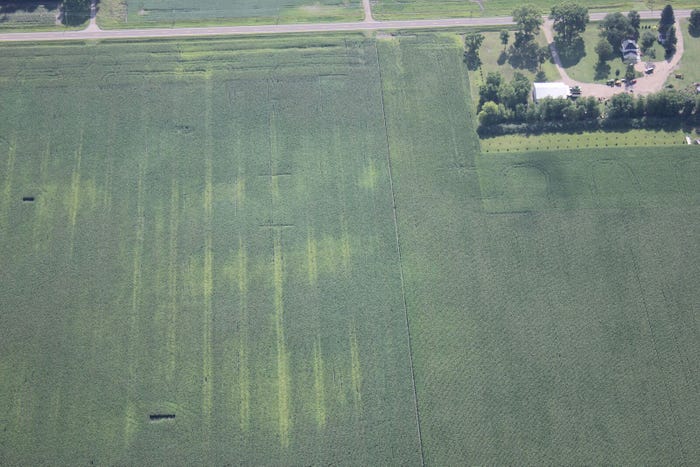
Even for extension-researchers like DeJong-Hughes, evaluating compaction and solutions are complicated and can be frustrating. "You can have a comparison set up in a field using high axle loads with adjustable tire pressure equipment to show compaction's impact on plants. Then you get rain for three days that softens up the soil and no effect can be seen," she says.
Reduced tire pressure helps
Jahn has seen the impact of tire inflation management in his fields first hand, but not from the edge of the field. It took several years of drone captured images and fly-overs of his fields to show the impact of compaction from his center-fill planter.
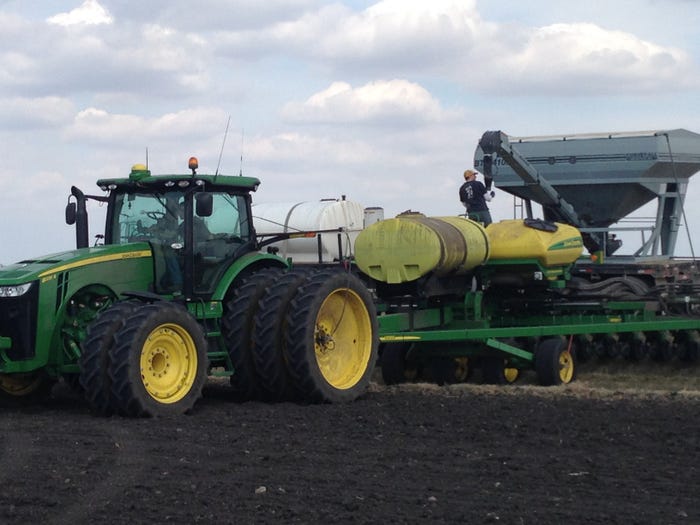
Equipping center-fill planters like this one with adjustable inflation systems can reduce deep soil compaction in wheel tracks. Clarkfield, Minn. producer Eric Jahn has seen the benefits first hand on his fields, especially in wetter springs.
"I could see the pinch-row compaction was injuring corn nearest the wheels," says Jahn. "I added larger tires and a Precision Inflation system. It continues to make a difference. Where I went with road pressure, the corn was shorter. As I dropped the pressure, the difference in corn height went away. In wetter springs, the reduced inflation offers more benefits. Without it you can see the compaction effect the next spring and even summer."
DeJong-Hughes has no problem endorsing the use of on-the-go deflation/inflation systems, as well as using larger tires at the lower psi. While she recommends against axle loads of more than 10 tons, she recognizes that 20 to 40-ton loads are a common reality. Given that, she recommends reducing tillage and adding cover crops to improve soil structure.
"Soil structure is the number one defense against compaction," says DeJong-Hughes.
About the Author(s)
You May Also Like




